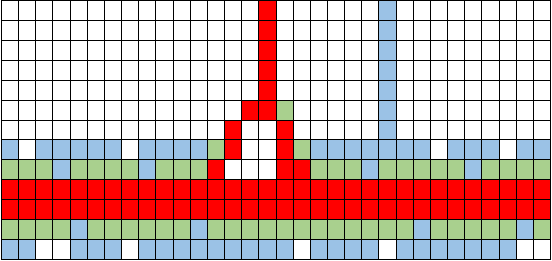 |
SP API
|
 |
SP API
|
Real-time spectrum analysis allows you to perform continuous, gap free spectrum analysis on bandwidths up to 40MHz. This provides you with the ability to detect short transient signals down to 3.125us in length.
For a list of all examples, please see the examples/ folder in the SDK.
Real-time spectrum analysis is a frequency domain measurement. For time domain measurements see I/Q Streaming.
RBW directly affects the 100% POI of signals in real-time mode.
Real-time spectrum analysis returns a sweep, frame, and alphaFrame from the spGetRealTimeFrame function. These are described in the sections below.
The real-time measurement is performed over short consecutive time periods and returned to the user as a sweep and frame representing spectrum activity over that time period. The duration of these time periods is ~33ms. This means you will receiver ~30 sweep/frame pairings per second.
Once the measurement is initialized via spConfigure, the API is continuously generating sweeps and frames for retrieval. The API can buffer ~1 second worth of past measurements. It is the responsibility of the user to request sweeps/frames at a rate that prevents the accumulation of measurements in the API.
Real-time spectrum analysis is accomplished using 50% overlapping FFTs with zero-padding to accomplish arbitrary RBWs.
The sweeps returned in real-time spectrum analysis are the result of applying the detector over all FFTs that occur during the measurement period. The min/max detector will return the peak-/peak+ sweeps. The average detector will return the averaged sweep over that time period.
When average detector is selected, both sweepMin and sweepMax return identical sweeps and one of them can be ignored.
The frame is a 2-dimensional grid representing frequency on the x-axis and amplitude levels on the y-axis. Each index in the grid is the percentage of time the signal persisted at this frequency and amplitude. If a signal existed at this location for the full duration of the frame, the percentage will be close to 1.0. An index which contains the value 0.0 infers that no spectrum activity occurred at that location during the frame acquisition.
The alphaFrame is the same size as the frame and each index correlates to the same index in the frame. The alphaFrame values represent activity in the frame. When activity occurs in the frame, the index correlating to that activity is set to 1. As time passes and no further activity occurs in that bin, the alphaFrame exponentially decays from 1 to 0. The alpha frame is useful to determine how recent the activity in the frame is and useful for plotting the frames.
The sweep size is always an integer multiple of the frame width, which means the bin size of the frame is easily calculated. The vertical spacing can be calculated using the frame height, reference level, and frame scale (specified by the user in dB).


RBW is limited to the range of [2kHz, 1MHz].